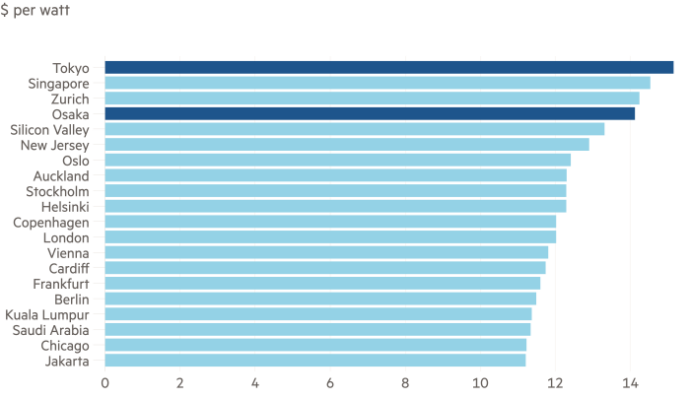Stay informed with free updates
Simply sign up to the Japanese business & finance myFT Digest — delivered directly to your inbox.
A deal inked between two of Japan’s 100-plus regional banks in April was barely noticed outside Japan, but the merger creates one of the country’s biggest second-tier banks. It is also an important signpost for investors trying to work out how Japan’s banking system will evolve in the coming years.
Gunma Bank and Daishi Hokuetsu Financial’s combined total in assets of ¥21.4tn ($145bn) sets a new benchmark. Some industry observers predict that ¥20tn could become a key threshold for all lenders in Japan, and that more consolidation could be on the cards as banks seek to find economies of scale.
“With Gunma and Daishi Hokuetsu becoming a ¥20tn group — that was surprising for the sector, because people believed that ¥10tn might be enough, but ¥20tn is definitely a new angle,” says Katsunori Tanaka, chief investment officer at hedge fund Ariake Capital, a specialist investor in the country’s 100 or so regional lenders.
“The total assets of regional banks are somewhere in the region of ¥500tn. So you can see exactly how many banks are going to be left over if we take the ¥20tn line seriously,” says Makoto Kuroda, an analyst at Goldman in Tokyo. “It might be just indicative, but it is a helpful way to think about how consolidation might look.”
¥20tn
Asset total that could become new threshold for regional lenders
For Tanaka, the deal marks the start of widespread change in the sector as a perfect storm of regulatory, macroeconomic and cost pressures come to bear on the system. Japan’s long-overdue exit from decades of deflation as well as its long-awaited return to rising interest rates are forcing a reassessment of what it will take to survive.
“When the country was under negative interest rates, there was no incentive to become bigger. But right now, finally, inflation is coming, interest rates are positive, so banks have incentives to grow,” says Tanaka from his office in central Tokyo where he has made long-only investments in around 10 regional banks.
Japan’s politicians and regulators are pushing consolidation harder than ever at the moment, say analysts and investors, because the banks have a window to act, with interest rates rising and helping to prop up profit margins.
The regulatory environment is set up to help — not only is the government offering, admittedly small, subsidies to merged banks but existing rules mean regional banks are not subject to competition rules until 2030.
¥500tn
Approximate total assets of 100-plus regional banks in Japan
“Regulators don’t want the regional banks to just sit back on their laurels right now, but to actually use this opportunity to think about what their profitability might look like five, or even 10 years ahead,” says Kuroda.
The reason for the regulators’ concern is that the flip side of rising profits, driven by the difference between what banks pay depositors and how much they charge for loans, is that competition for deposits will also rise just as the country faces an accelerating and profound demographic shift.
“The issue is that older people own the deposits. Sooner or later, they will die, and their sons or daughters are not in the regional area,” explains Tanaka. “They’re sitting in Tokyo, in Osaka. So in this case the deposit will move from the regional area to the Tokyo area.”
The regional banks will be trying to grow for a host of reasons. They need sufficient assets relative to their cost bases, which will also need to be trimmed and consolidated. Branches will close, back-office systems will be shared or outsourced, and a number of people face losing their jobs.
More from this report
Gunma and Daishi Hokuetsu will operate under a holding company that allows them to keep their own brands and the loyalty they have built, but they plan to share some functions, systems and office space.
Larger groups such as theirs will have an easier time recruiting staff, but that is a real concern for banks in the regions hardest hit by population decline.
The regional banks will also need to deploy their staff better as they try to grow new business lines, making the most of their valuable and deep connections to local companies in order to generate higher margin fee business and working out partnerships with non-banks, such as telecoms groups.
And at the same time the banks are already actively trying to compete for deposits outside their regions.
“You’re already starting to see some form of competition between regional banks for deposits via the digital bank subsidiaries or their digital branches. If you look at the one-year time deposit, the top deposit rate offerings, many of them are from the digital branch or the digital banks,” says Kuroda. “That digitisation is a way for regional banks to cross prefectural borders,” she adds.
It is one way to describe the coming battle. Nicholas Smith, strategist at investment group Citic CLSA, was more direct in a recent note to clients: “It is clearly open season for M&A in a battle to gain critical mass, but many are not likely to find suitors, and will be left to die.”


